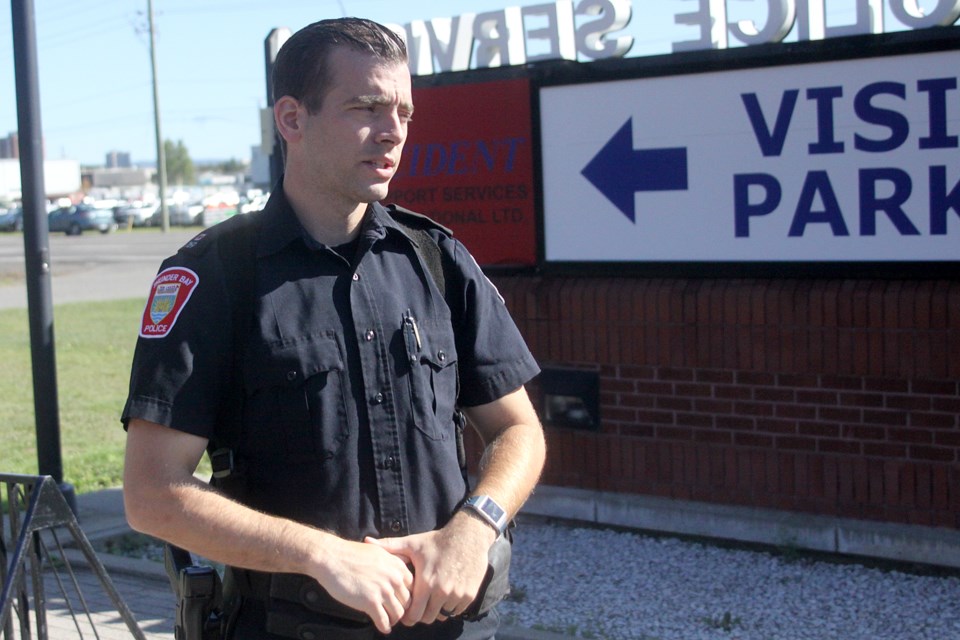THUNDER BAY – City police have made six drug impaired driving arrests in just over a week, including four in three days.
Thunder Bay Police Service officers arrested the quartet of drivers between Sunday and Tuesday, with two others busted early last week to continue an alarming trend that has been growing throughout the year.
With a per capita rate of 22 drug impaired driving arrests per 100,000 people, Thunder Bay has tripled the Canadian average and is seven times higher than the provincial rate heading into the final quarter of 2019. About 20 per cent of the force's impaired driving cases have involved motorists under the influence of drugs.
“This past week and the Labour Day weekend was out of control, truthfully,” Thunder Bay Police Service Const. Mark Cattani said on Wednesday.
“That’s concerning for us given it’s back to school. With families coming back – excited for the new school year – we don’t want to see drug impaired drivers putting anybody at risk, let alone children.”
On Tuesday morning, officers observed a 31-year-old woman driving erratically. On Monday afternoon, a 48-year-old woman was charged after being found in the driver’s seat when officers responded to reports of a possibly intoxicated individual having difficulty walking to a vehicle at nearly the same time a 33-year-man was seen driving aggressively. On Sunday, a 44-year-old woman was stopped after trying to drive away while being ticketed for parking beside a no parking sign. Two other drivers – a 26-year-old man and a 34-year-old woman, were charged after being found sleeping behind the wheel last week.
Cattani said statistics have shown that drug impaired driving happens across all hours of the day, every day of the week, making it problematic for police to establish effective RIDE programs.
While last year’s legalization of cannabis initially raised concerns about an increase in people driving while high, Cattani said apprehended drivers have overwhelmingly been under the influence of opioids, crack cocaine and abused prescription medication.
“Each drug category has different types of effects on an individual,” Cattani said, adding that drugs are unpredictable with stimulants causing people to become overly excited with elevated heart rates and blurred vision, while opioids have a depressive effect and can cause a person to become comatose.
“When it becomes really problematic is when people start mixing different categories of drugs together. What happens is we don't really know what's going to occur inside the body. You might get a person who's ramped up, you might get a person who's depressed on the other end and you might get somebody who's bouncing around in between the two. It gets very concerning from a safety standpoint."
While investments have been made in field sobriety testing training for uniformed patrol officers and additional drug recognition evaluators, determining whether a suspected driver is high is different than trying to prove a driver is drunk.
“Drug impaired driving is far more difficult to detect than alcohol,” Cattani said, adding that the odour of alcohol is typically a major giveaway for nabbing drunk drivers.
“We’re training officers to look for other things like paraphernalia in plain view but the eyes are typically one of the biggest clues. The size of the pupils can indicate a person’s under one or more categories of drugs. The person could appear to be intoxicated but not have any signs of alcohol impairment. If it can’t be explained by medical reasons, it’s typically drug impairment.”
Charges for impaired driving – whether by alcohol or drugs – result in an immediate 90-day licence suspension and week-long vehicle impoundment, while a conviction carries a minimum one-year licence suspension and requirement to use an ignition interlock device.
